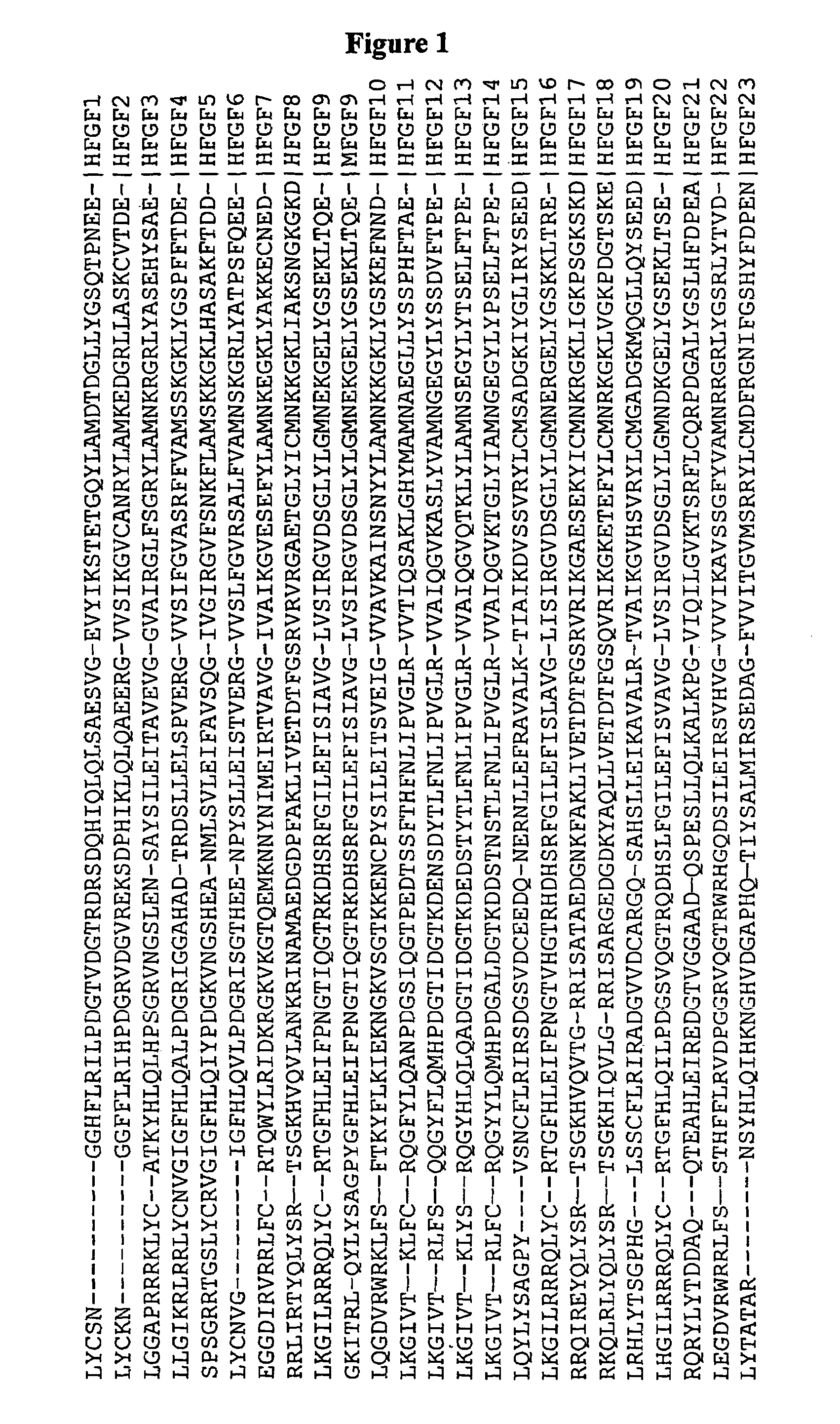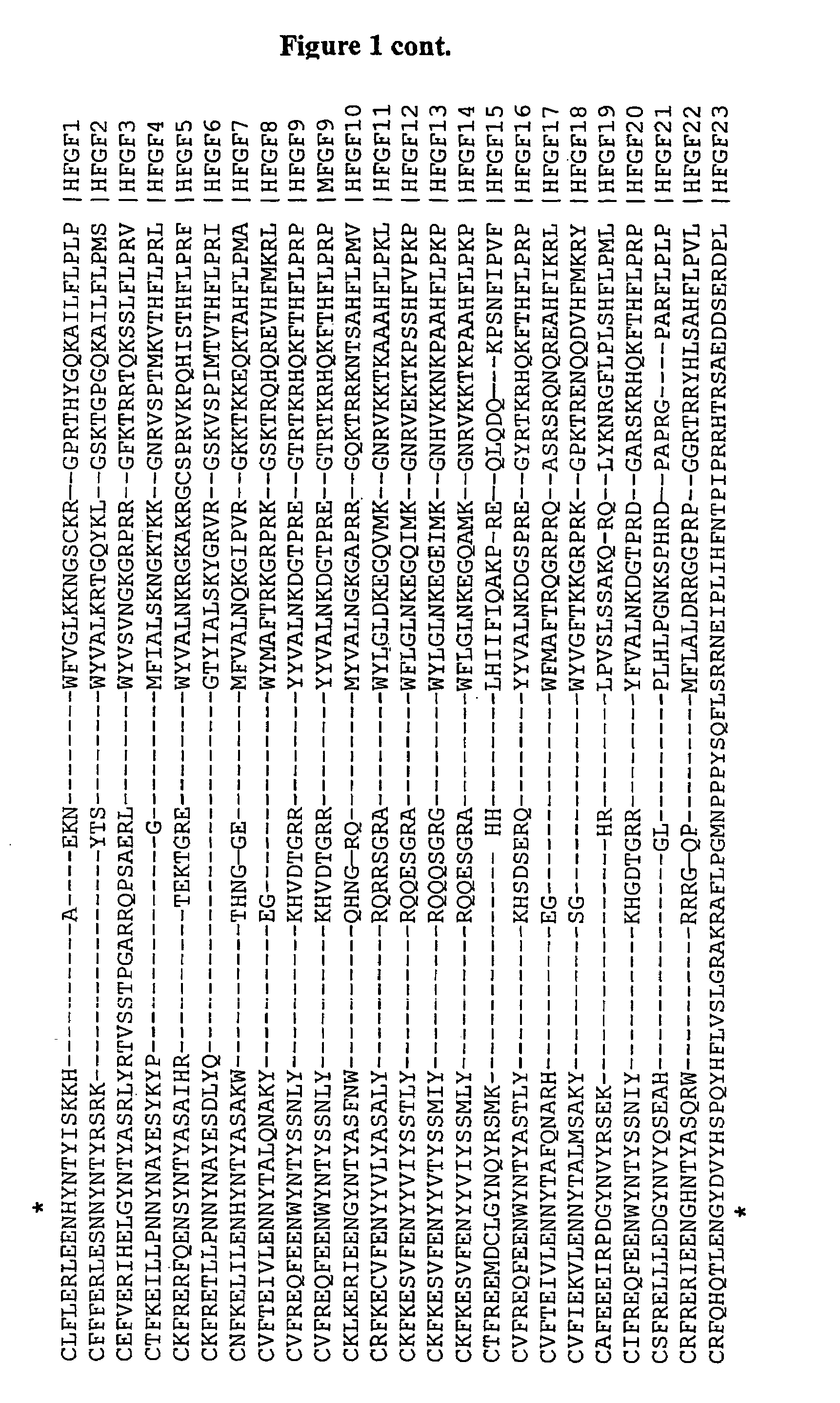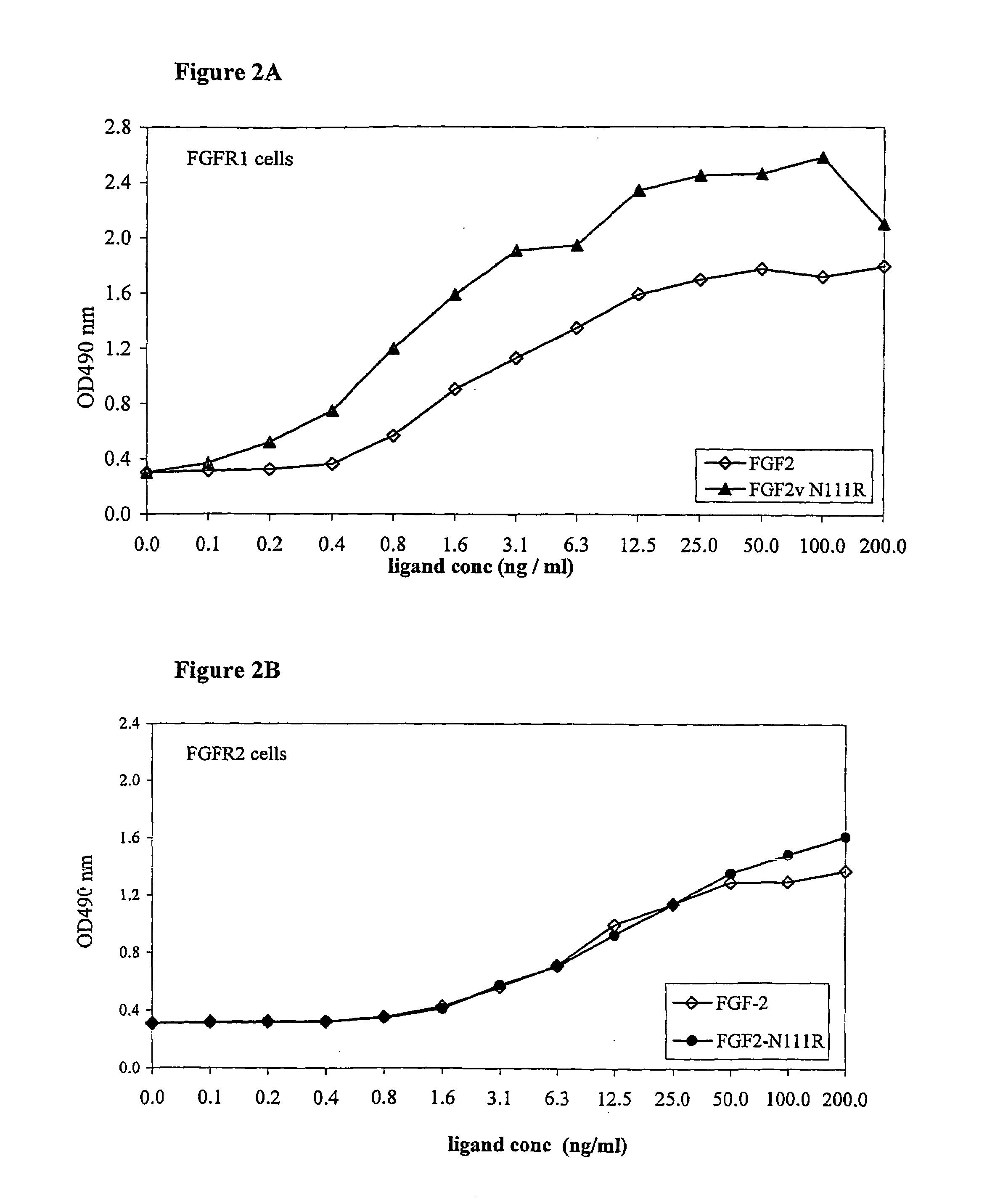FGF variants and methods for use thereof
a technology variants, which is applied in the field of mutations and variants of fibroblast growth factor, can solve the problem of not teaching receptor specificity changes, and achieve the effect of improving receptor specificity and/or affinity and biological activity
- Summary
- Abstract
- Description
- Claims
- Application Information
AI Technical Summary
Benefits of technology
Problems solved by technology
Method used
Image
Examples
example 1
Expression of FGF Variants Using High Expression System
[0251]Construction of the p89Bluescript (p89BS) Construct
[0252]Construction of p89BS was performed as described in copending WO 02 / 022779. The genes encoding the proteins of the present invention were ligated into the NdeI-BamHI digest of the p89BS construct and transformed into E. coli cells, such as JM109, TG1, TG2, DHα, and XL1blue.
[0253]Construction of FGF Variants
[0254]Construction of the FGF-2, FGF-4 and FGF-9 variants was performed using the polymerase chain reaction (PCR) technique. Three constitutive PCR reactions were performed, where the variation or variations were introduced into the gene by amplifying DNA fragments from both ends of the mutation site(s).
[0255]The primers and protocol used for the human FGF-2 variants were as follows:
[0256]
HF2-for (SEQ ID NO:58)5′GGAATTCCATATGGCTGAAGGGGAAATCHF2-rev (SEQ ID NO:59)5′CGGGATCCTCAGCTCTTAGCAGN111G-for (SEQ ID NO:60)5′GATTGGAATCTAATGGCTACAATACTTACN111G-rev (SEQ ID NO:61)5′...
example 2
Preparation of Truncated FGF Variants
[0274]The truncated mutants were prepared by PCR, where exemplary primers used are listed herein below:
[0275]
35421(SEQ ID NO:85)5′-GGCCCTAGGTCATCTAGGTAAAAAATGTGTG35422(SEQ ID NO:86)5′-GGGAATTCCATATGCAGCTATACTGCAGGACTG29522(SEQ ID NO:87)5′-AGCTGGATCCTCAACTTTGGCTTAGAATATCC40869(SEQ ID NO:88)5′-CGATACGTACATATGCACTTAGAAATCTTC[0276]Where:[0277]35421 was used to introduce stop codon (Pro191Stop) and a BamHI restriction enzyme site for the construction of the FGF9-2 and FGF9-L72M variants;[0278]35422 was used to introduce the start codon and an NdeI restriction enzyme site for the construction of the R64M-FGF9 and FGF9-2 variants;[0279]29522 was used to introduce the start codon (R64M) and a Bam 1HI restriction site for the construction of the R64M-FGF9 variant;[0280]40869 was used to introduce a start codon (L72M) and a BamHI restriction enzyme site for the construction of the FGF9-L72M variant.
[0281]The new mutant PCR fragments synthesized in methods ...
example 3
FGF Variant Binding to FGFR-Transfected FDCP Cell Lines
[0283]The FDCP cell line is a murine immortalized, interleukin 3 (IL-3)-dependent cell line of myelocytic bone marrow origin that does not express endogenous FGF Receptors (FGFR). Upon transfection with FGFR cDNA, the FDCP cell line exhibits a dose-dependent proliferative response to FGF that can replace the dependence on IL-3. FGFR transfected FDCP cells can therefore be used to screen variant FGFs for specific inhibitors, activators or for FGFR signaling. FDCP cells response to various ligands is quantitated by a cell proliferation assay with XTT reagent (Cell Proliferation Kit, Biological Industries Co.). The method is based on the capability of mitochondrial enzymes to reduce tetrazolium salts into a colorogenic compound, which can be quantitated and is indicative of cell viability.
[0284]Specifically, FDCP cells stabily expressing FGFR3-IIIc, FGFR3-IIIb isoforms, FGFR2IIIc or FGFR1 were grown in “full medium” (Iscove's Mediu...
PUM
| Property | Measurement | Unit |
|---|---|---|
| temperature | aaaaa | aaaaa |
| temperature | aaaaa | aaaaa |
| volume | aaaaa | aaaaa |
Abstract
Description
Claims
Application Information
 Login to View More
Login to View More - R&D
- Intellectual Property
- Life Sciences
- Materials
- Tech Scout
- Unparalleled Data Quality
- Higher Quality Content
- 60% Fewer Hallucinations
Browse by: Latest US Patents, China's latest patents, Technical Efficacy Thesaurus, Application Domain, Technology Topic, Popular Technical Reports.
© 2025 PatSnap. All rights reserved.Legal|Privacy policy|Modern Slavery Act Transparency Statement|Sitemap|About US| Contact US: help@patsnap.com



